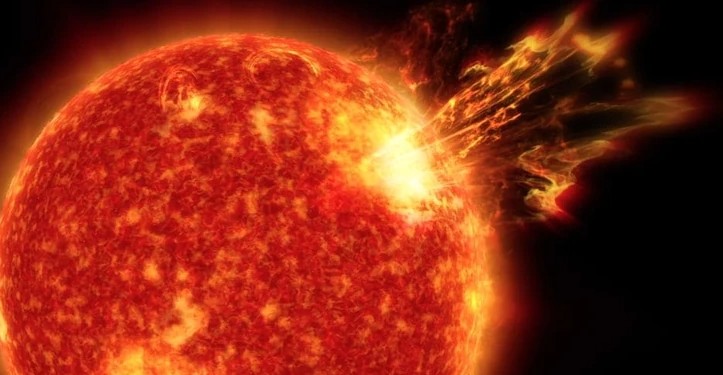News
Sun Starts 2023 By Blasting An X-Class Solar Flare; More Eruptions Are Anticipated In The Next Few Days
Published
1 year agoon

Due to the sun’s regular production of solar flares and coronal mass ejections, the past year was fairly active in terms of space weather. However, predictions for 2023 showed that things would only get busier for the Sun and everything that fell into its sphere of fire in 2018.
A powerful X1.2-class solar flare erupted from the sunspot AR3182, confirming the forecasts just one week into the new year.
Beginning on January 3, the newly forming sunspot likely caused an X-class outburst on the far side of the Sun. On January 6, there was a distinct X-flare on the Earthside.
Based on the intensity of the X-rays released by solar flares, NOAA has divided them into five categories: A, B, C, M, and X, with each level having ten times the intensity of the previous. The five flare classes are all large and quite intensive.
They are significant occurrences that have the potential to start global radio blackouts and persistent radiation storms.
A dome of glowing-hot plasma that was inflated by the explosion on January 6 lingered above the detonation site for nearly an hour.
Although no coronal mass ejection (CME) has been seen leaving the region, the flare’s intense UV and X-ray pulses ionized the top of the Earth’s atmosphere and knocked out shortwave radio in the South Pacific.
As a result, for up to an hour following the flare, ham radio operators, seafarers, and aviators may have observed unexpected propagation effects at frequencies below 30 MHz.
Sunspot AR3182 is currently living up to expectations. The active sunspot has already generated a powerful X1.2-class solar flare, as seen by NASA’s Solar Dynamics Observatory, despite being fully visible for less than 24 hours.
There is a significant likelihood that the explosions may continue in the next few days given the magnitude and apparent complexity of this big active region, according to spaceweather.com.
The Sun has recently been irritable all the time. However, as we approach the peak activity period of the Sun’s 11-year solar cycle in 2025, solar activity is predicted to increase even more.
Read Also – Validity of the Wave Growth Theory in Space: Research
What kind of solar flare would be an X-class?
X-class flares are massive events that can cause radio blackouts around the world as well as long-lasting radiation storms in the upper atmosphere. M-class flares are medium-sized and typically cause brief radio blackouts in Earth’s polar regions.
How numerous are X-class solar flares?
The average is 122 flares/132 months = 0.9, which can be rounded to 1 flare/month because 122 flares were observed during the 132 months of the sunspot cycle.
When did Earth last experience a solar flare?
The CME that was captured by STEREO in July 2012 was comparable in strength to the one that is believed to have struck Earth during the 1859 Carrington Event.
You may like
-


Individual Chats Can Soon Be Locked on WhatsApp, According to an Android Beta Update
-


Hyundai Verna Launches brand-new Car In 2023
-


Indian Navy conducts major exercise TROPEX-23
-


Moto G73 5G smartphone launched in India
-


Touching & Transforming Lives through Subconscious Driven Techniques With Conscious Action….. – BLOSSOM FURTADO
-


Japan, the United States, South Korea, and Taiwan have launched ‘Chip 4’ supply chain discussions
